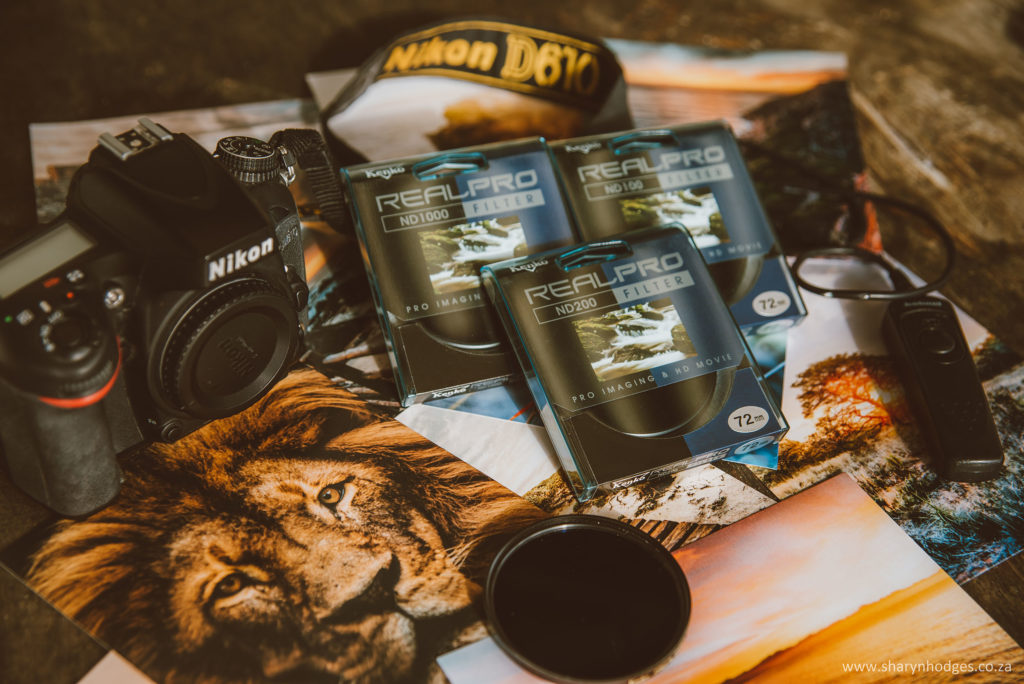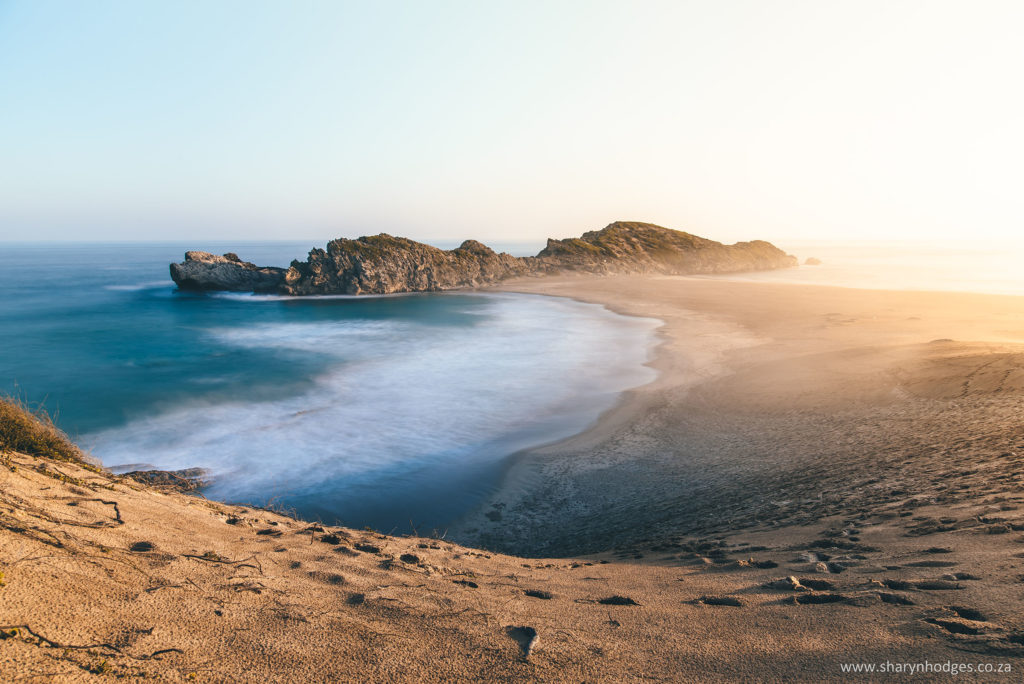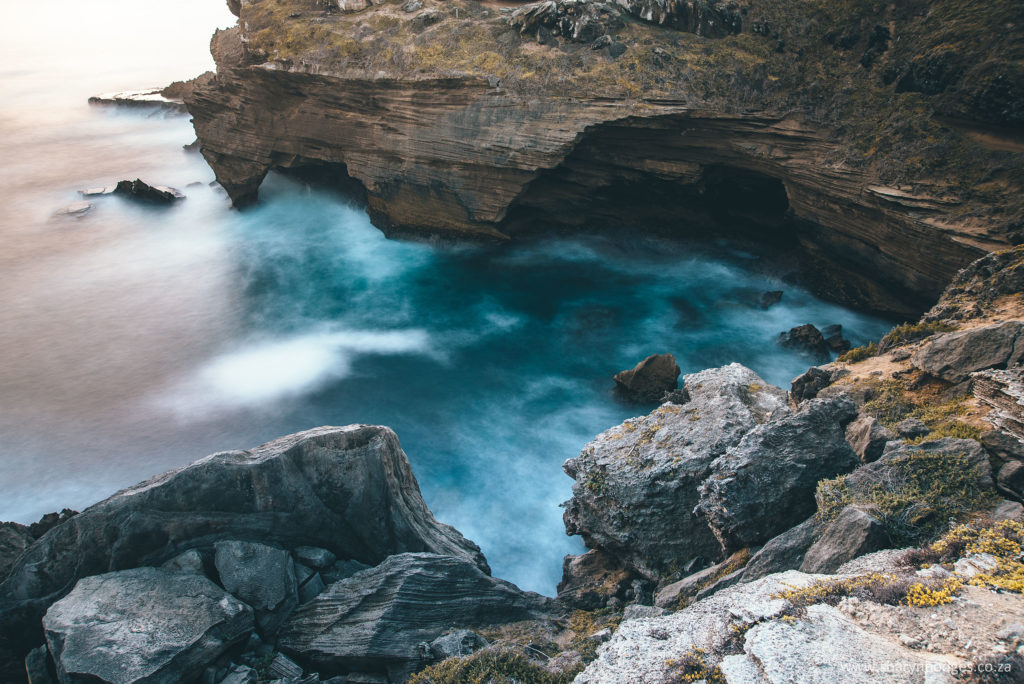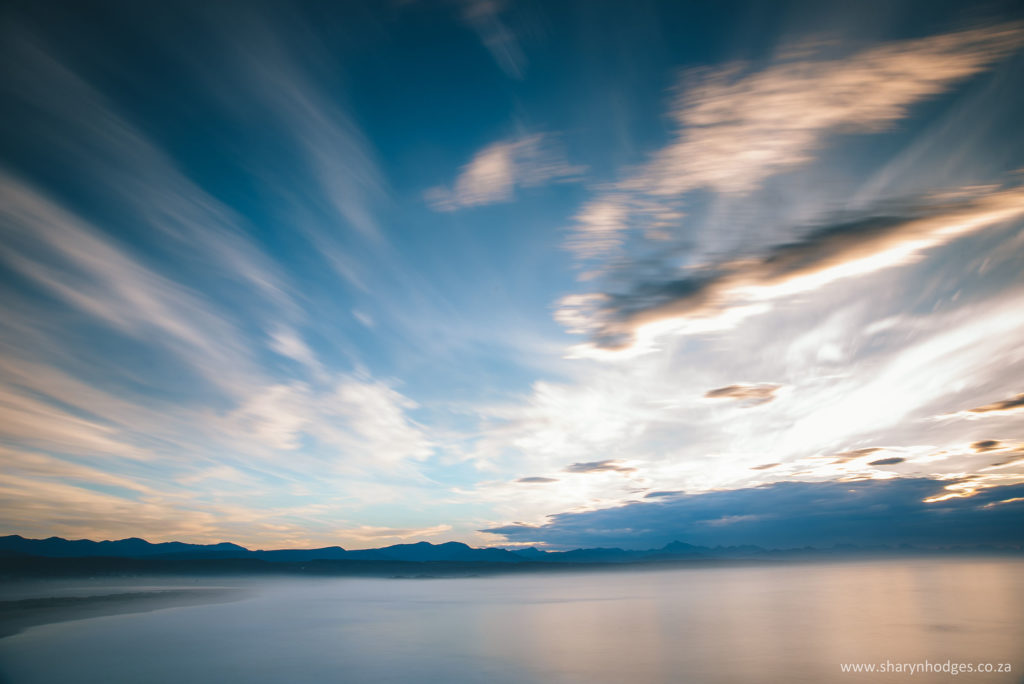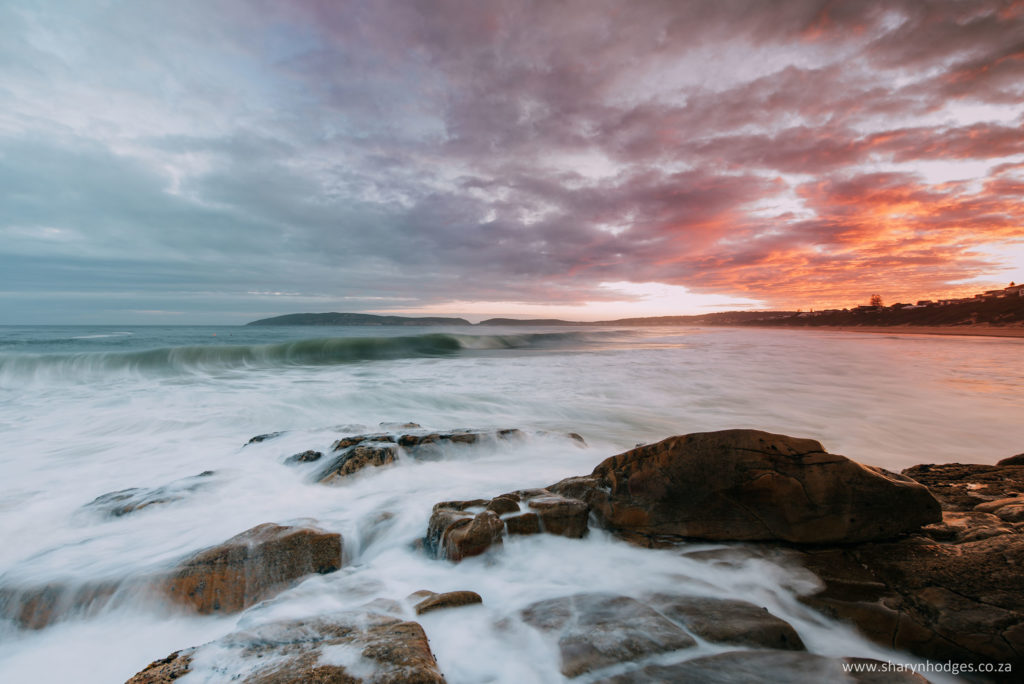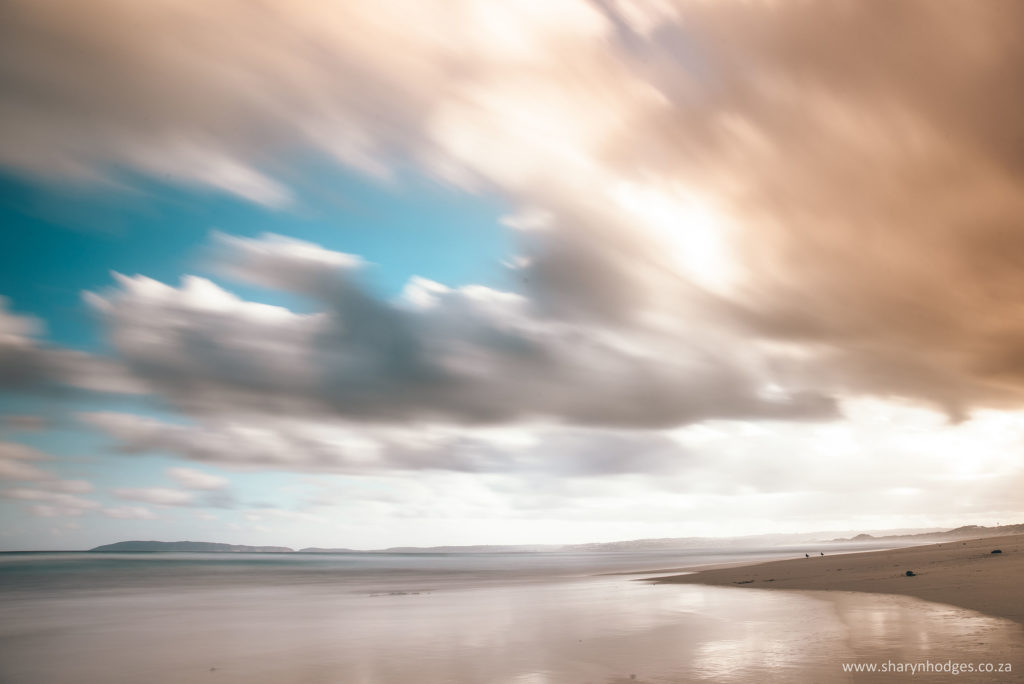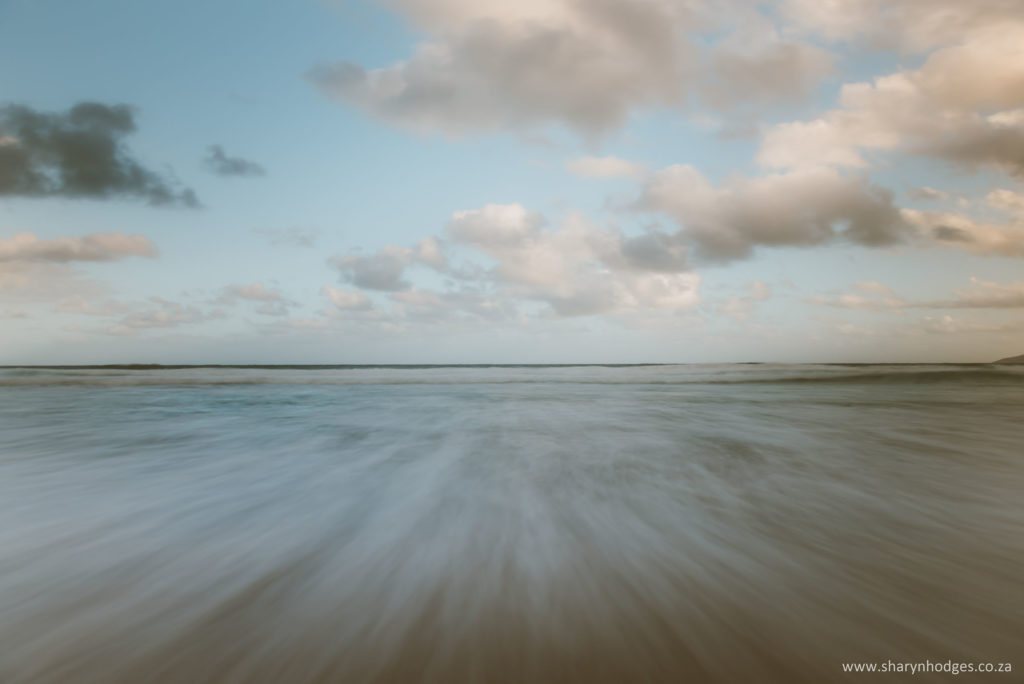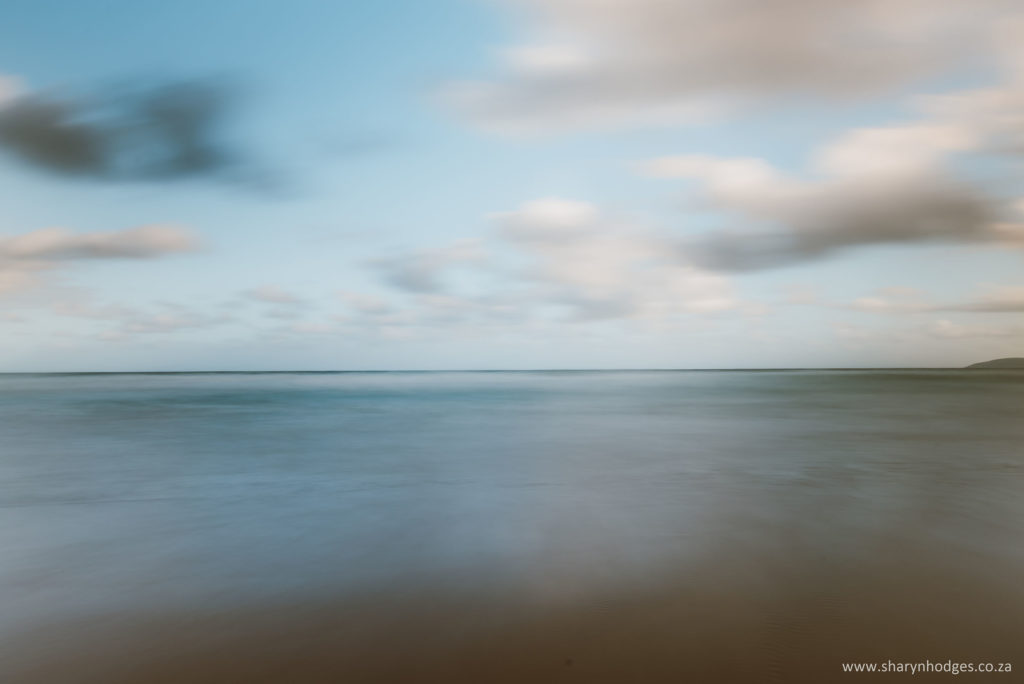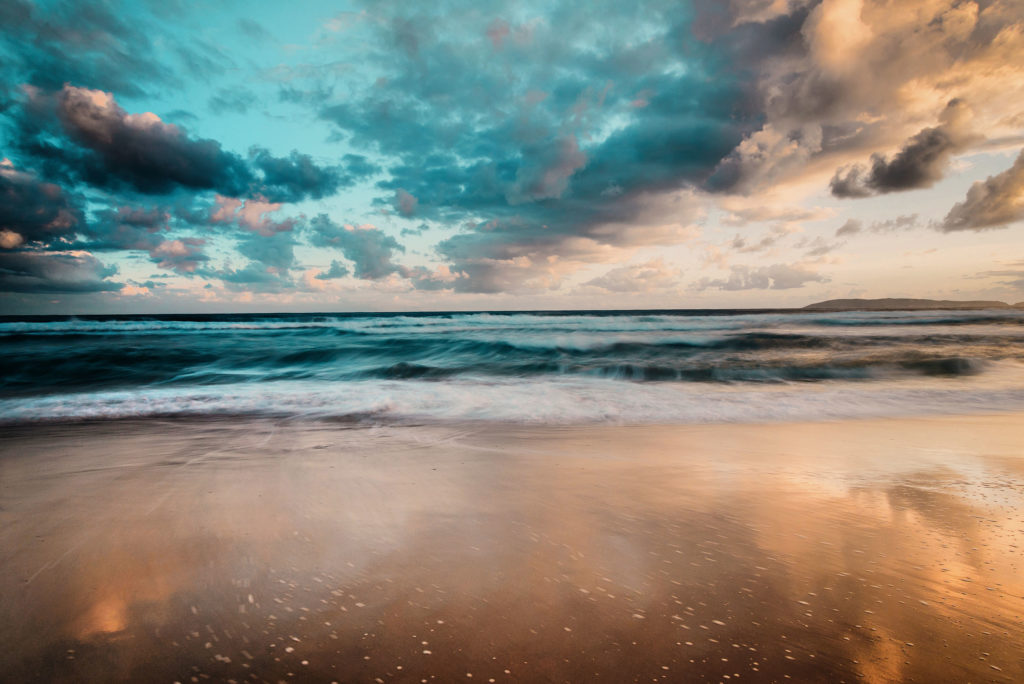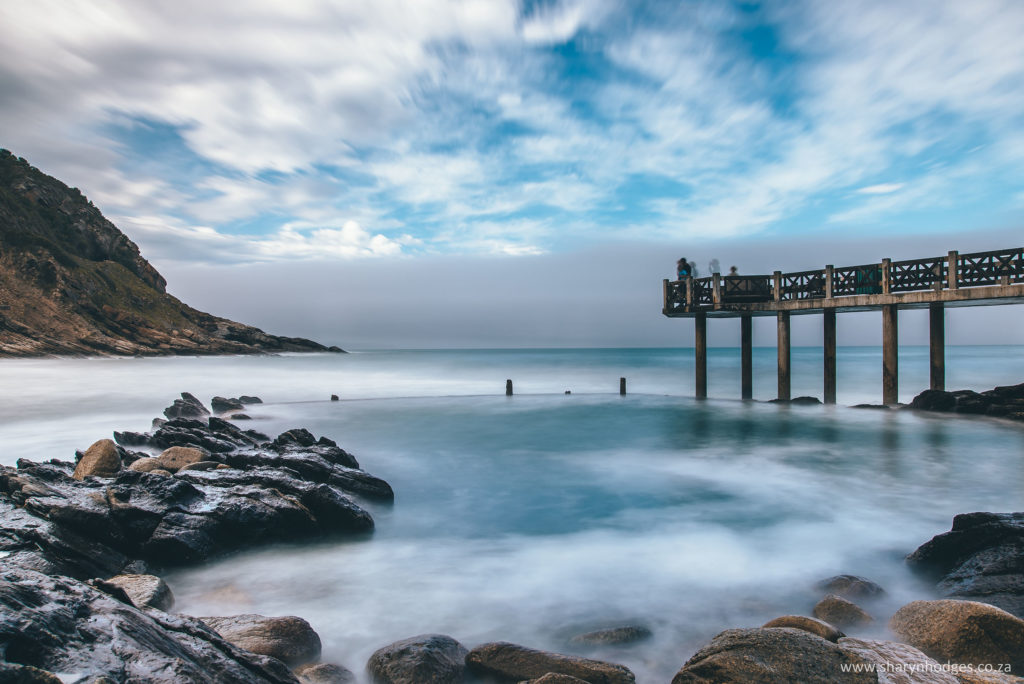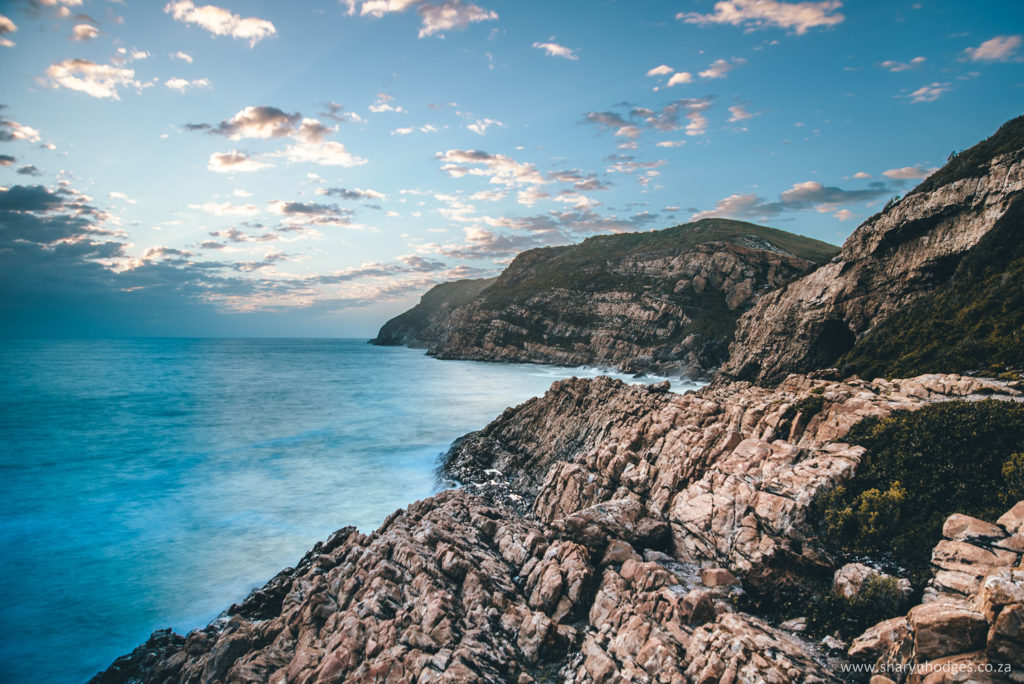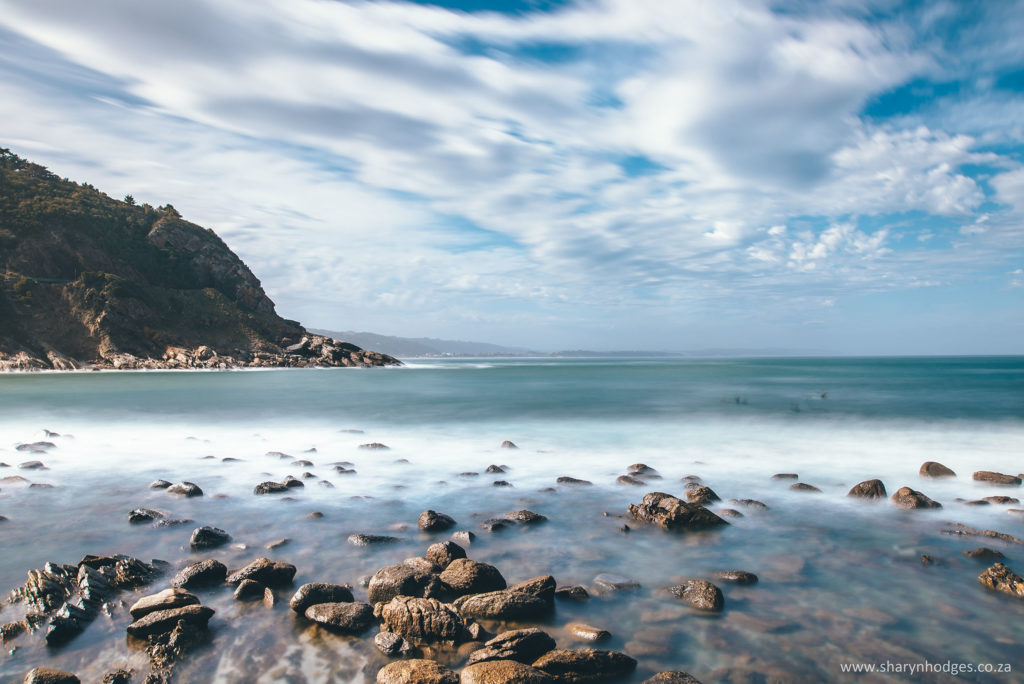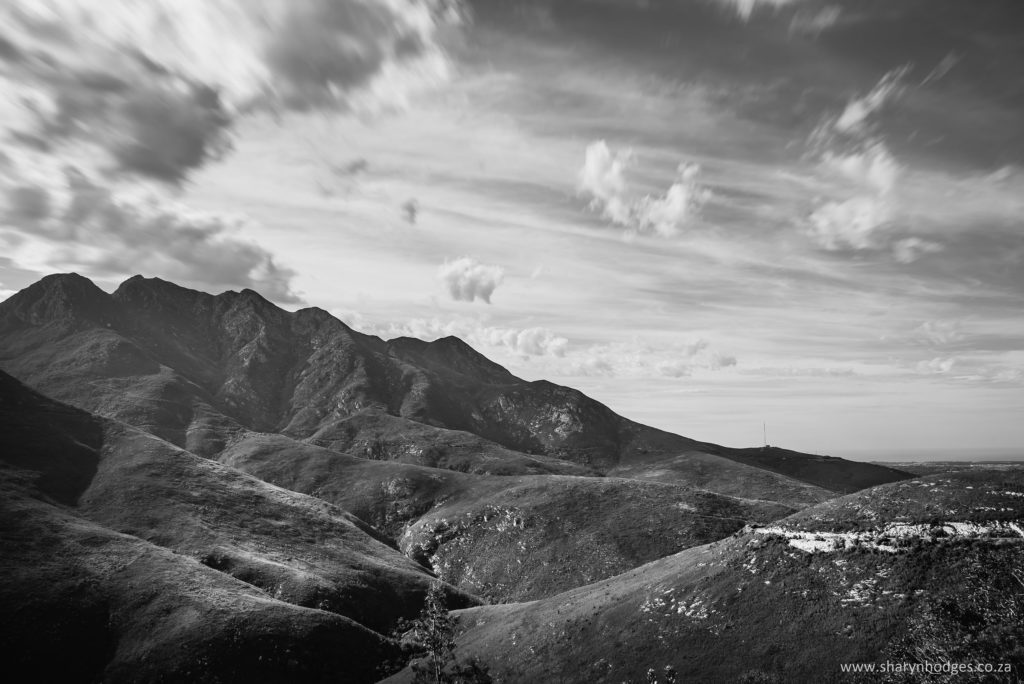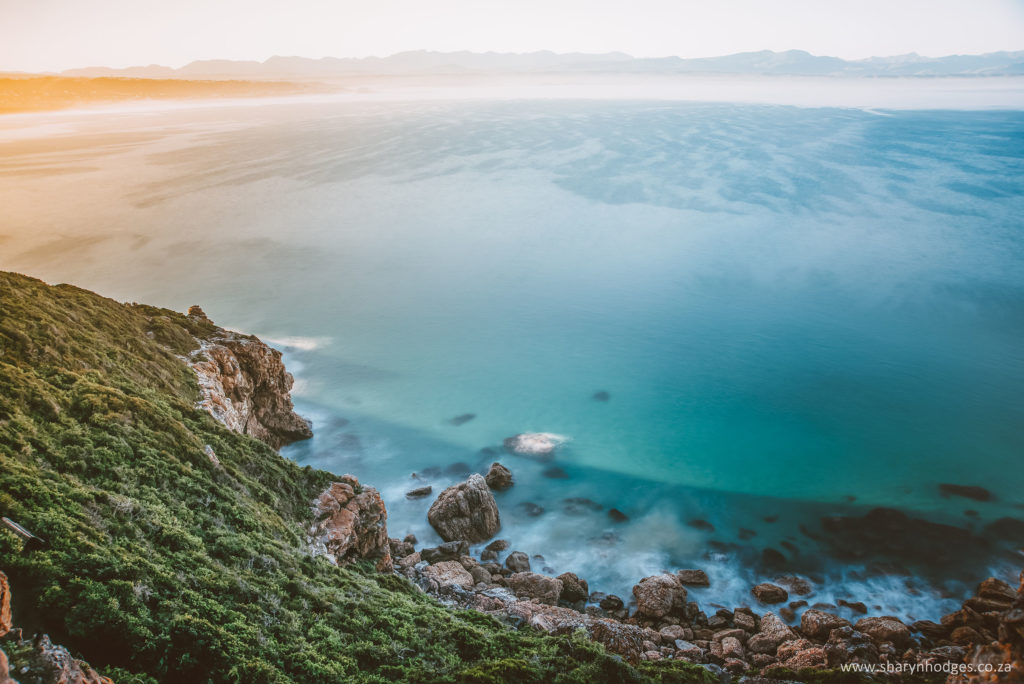There are hundreds of blogs out there telling you how to use a Neutral Density Filter (most of which are very technical), but I will be telling you my thought process of “How I use the RealPro ND100 and the RealPro ND500 filters”.
So just to give you some sort of starting point, if you have never heard of a ND filter before, it’s a filter that you attach in front of your camera lens to take creative and dramatic photographs. I am sure you have seen the soft, blurry/smooth water photographs and asked how this was taken. Well, it was most likely a ND filter.
There are many different subjects you could photograph using a ND filter such as moving cars, blurring people as they walk across a busy intersection, waterfalls or you could even create dramatic skylines with moving clouds. The possibilities are endless. I use the filter for smoothing out the sea and bringing out the rocks and if I am lucky, to capture moving clouds.
A ND filter allows you to control the amount of light you allow into your camera lens when leaving your shutter open for anything between 1 second to 1 minute. If you try and take a photo in the middle of the day with an open shutter for, let’s say, five seconds, your photo will come out overexposed.
Each RealPro Filter has its own individual plastic case. When not using the filter, its advised to keep it in its case. This provides protection from accidents, dust and scratches, all which could impact your final image negatively. The RealPro ND filter range is circular and screws onto the lens thread. Perfect for changing filters quickly.
I am not a technical person and there are hundreds of “How should I use my ND Filter” blogs or YouTube videos out there that will give you great advice. I will be telling you how I personally use the filters in my everyday work. How I compose a photograph, the thought process and the outcome.
Along the beautiful coastline of the Garden Route, my hometown of Plettenberg Bay provides the most spectacular photographic opportunities, which range from pristine clean beaches to rugged and spectacular rock formations.
I love the unique angle of the Island on Robberg Nature Reserve. I was so amazed that I could get 20 seconds of long exposure for this image, taken around 4 PM with the sun still high in the sky and not a single cloud to help diffuse the sunlight.
Camera Mode: M
ND Filter: RealPro ND500
Shutter Speed: 20 seconds
ISO: 50
Aperture: F13
Camera: Nikon D750 and my lens Nikon 24 – 85mm
I am a “see and feel” type of photographer. I love waking up not knowing what the day has in store for me. There are so many unpredictable natural elements which a photographer should account for; for instance, will there be clouds and what are the sea conditions? However, there are things you can predict and as always, preparation is the key. Every night before I go to bed, I make sure all my camera equipment is packed and ready to go if I know I will be going down to the beach or on a hike early the next morning.
My camera batteries are fully charged (long exposures drains the battery very quickly!), my tripod is packed, all my lenses and ND filters wiped clean.
Taken at Robberg Nature Reserve just before sunset. Long exposures bring out such amazing detail on photographs, look at the rocks, they look so authentic.
Camera Mode: M
ND Filter: RealPro ND500
Shutter Speed: 59 seconds
ISO: 160
Aperture: F7.1
Camera: Nikon D750 and my lens Nikon 24 – 85mm
Right, we have a scene in mind, so how do I use my ND filter to enrich it?
Creating long exposures mean that you will be using a slower shutter speed. Set your camera up securely on a tripod and your correct exposure without the ND filter attached. I compose my image before screwing on the filter especially when I use the ND500. Once the filter is in place and you look through your viewfinder, you will notice the whole scene will appear much darker. Once I have my scene set, I switch the camera lens on manual focus as a precautionary measure; this just means that when I screw the ND filter on, my camera won’t change focus when I push the release button.
If there are clouds in the sky with a gentle breeze, I grab my Real Pro ND500 and it doesn’t matter what time of the day it is. This was taken at sunrise and I probably could have taken a long exposure. Remember: the reason why we use ND filters is to capture movement.
Camera Mode: M
ND Filter: RealPro ND500
Shutter Speed: 57 seconds
ISO: 50
Aperture: F10
Camera: Nikon D750 and my lens Nikon 24 – 85mm
Now, this is when things can potentially get tricky. And there are three ways to go about knowing how many stops your filter will cut and how you will adjust your camera settings:
- Manually count the stops your filter has cut out and determine your shutter speed accordingly;
- Use a ND calculator app – I use “PhotoPils” on my phone; or
- My favorite way of approaching this, which I use 80%, is just winging it! There is nothing wrong with experimentation.
A key piece of equipment during long exposures is a cable release as this helps eliminate any movements on the camera and thus producing a sharper image. Keep your ISO as low as possible to reduce noise, set your camera to manual (“M”) and always shoot in RAW for the best image quality.
(Note: If you would like to learn more about using ND Filters, read this great article: http://www.cambridgeincolour.com/tutorials/neutral-density-filters.htm)
I particularly enjoy using my RealPro ND filters at dusk (sunrise/sunsets) and around water or fast-moving clouds. As I said, I’m a “see and feel” person; the settings that produced an amazing photo at noon today, might not yield the same results at noon tomorrow, because there are so many external factors that could play into your image, like clouds, low light, the position of the sun, and other natural elements. “Seeing and feeling” is part of the process of learning, and there is not a right and wrong approach. So, go out there, allow yourself the time to get to know your filters, get creative and have some fun!
I am in love with the sea and particularly the waves. For me, the sea is the sea and it has waves. For this shot, I focused on capturing the waves forming and breaking. I probably took about 20 photos to try and get this effect.
Camera Mode: M
ND Filter: RealPro ND100
Shutter Speed: 0.6 seconds
ISO: 50
Aperture: F9
Camera: Nikon D750 and my lens Nikon 24 – 85mm
This photo was taken at 3 pm. There were epic clouds and a lot of wind. I kept watching these clouds flying over from my office and thought I would take a chance. I grabbed my tripod and sandbag (I hang a sandbag from the bottom of my tripod for more stability) and look at the result!
Camera Mode: M
ND Filter: RealPro ND500
Shutter Speed: 25 seconds
ISO: 50
Aperture: F16
Camera: Nikon D750 and my lens Nikon 24 – 85mm
Taken on the same day, using two different filters. The left was taken using the RealPro ND100 with the settings at ISO 160, F5 and shutter at 1.6 seconds. While on the right was taken with RealPro ND500 with the settings at ISO 50, F16 and at 30 seconds.
So now to give you an idea on how to play around with your filters, this was taken with RealPro ND 500.
ISO 50, F2.8 and shutter at 1.3 seconds. Lowering my Fstop compensated for the use of the ND 500.
Taken at Victoria Bay just outside of George. If there is a little wind, water and clouds, you are bound to find me somewhere taking a long exposure. I am going to describe this scene: in the distance, you can see a cold front approaching; there is a thick bank of cloud and as the day went on, it was totally overcast. It was really awesome that I could capture it rolling onto Victoria Bay. On the pier, there are people watching the waves crashing below and into the tidal pool.
Camera Mode: M
ND Filter: RealPro ND500
Shutter Speed: 25 seconds
ISO: 50
Aperture: F16
Camera: Nikon D750 and my lens Nikon 24 – 85mm
I guess you could say I have a Robberg Nature Reserve obsession. There is just so much to photograph. Robberg provides stunning sunrises and sunsets with beautiful views, no wonder I practically live there!
Camera Mode: M
ND Filter: RealPro ND500
Shutter Speed: 8 seconds
ISO: 100
Aperture: F5.0
Camera: Nikon D750 and my lens Nikon 24 – 85mm
Surfer’s paradise Victoria Bay Style. I took this photograph in the middle of the day with my RealPro ND500 and I was really surprised at the results and I could have pushed my F-Stop a few notches up.
Camera Mode: M
ND Filter: RealPro ND500
Shutter Speed: 20 seconds
ISO: 50
Aperture: F16
Camera: Nikon D750 and my lens Nikon 24 – 85mm
I don’t spend enough time in the mountains, sadly they are not that accessible to me. But whenever I get a chance, I love taking a drive through them. Again, long exposures need movement, whether its water, lights, people or, in this case, clouds. These are the spectacular Outeniqua Mountains outside of George, South Africa.
Camera Mode: M
ND Filter: RealPro ND500
Shutter Speed: 10 seconds
ISO: 50
Aperture: F13
Camera: Nikon D750 and my lens Nikon 24 – 85mm
This photograph was not planned. I went to Robberg to go look for sharks: this spot is particular in really good for spotting them, as you can see by the clear water if there was a shark swimming by you would see it. I waited and hoped, but sadly I didn’t see any. The sun was starting to set (left-hand corner) and there was a slight breeze (ripples top of photograph), so I thought, well let’s see what happens if I pop my ND500 filter. Well, this is the result.
Camera Mode: M
ND Filter: RealPro ND500
Shutter Speed: 15 seconds
ISO: 50
Aperture: F7.1
Camera: Nikon D750 and my lens Nikon 24 – 85mm
About the Author
Sharyn Hodges is a photographer situated in Plettenberg Bay, The Garden Route, South Africa specializing in Wedding Photography, Engagement Shoots, Family Photography and Accommodation.
I am inspired daily by nature’s ever-changing canvas of textures, colors and patterns. My heart lies buried in the vast expanses of Plett’s beaches and the sheer splendor of the surrounding Garden Route. Photography is in my veins; my mission is to capture those fleeting seconds of beauty which characterizes this fragile adventure we call life.
Website: http://sharynhodges.co.za
Instagram: https://www.instagram.com/sharynhodges/
Facebook: https://www.facebook.com/sharynhodgesphotography/
Twitter: https://twitter.com/Sharyn_Hodges



